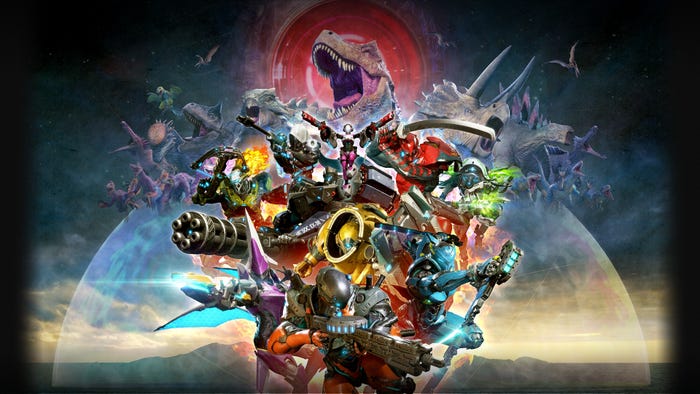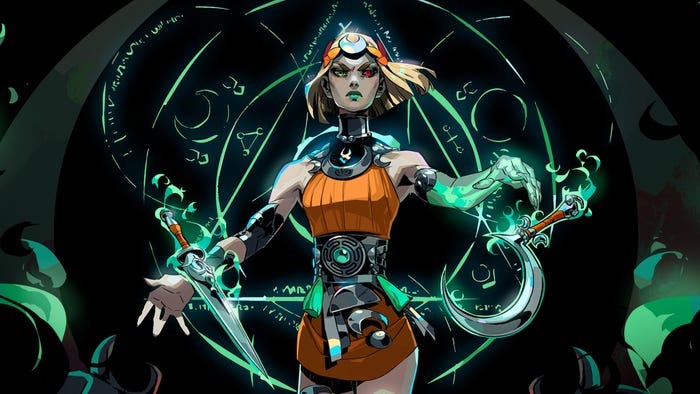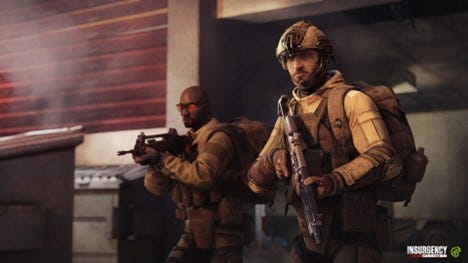Introducing The Gaming Experience Index (GEI)
I introduce how three major aspects comprise a gamer's unique experience of any game, and why they may matter to game developers as well as critics.

The Gaming Experience Index (GEI)
I discussed the fundamentals of gaming experience earlier, and in attempt of elaboration created an index that puts things in perspectives when it comes to reviewing games. The index composes of three major aspects: The Gamer’s Drive, Aesthetics and Intricacies and Empowerment Scale. I would like to call it The Gaming Experience Index (GEI), as it is designed to reflect how good a game is in offering an enjoyable, unique and empowering gaming experience in general.

Gamer's Drive, Aesthetics and Intricacies, and Empowerment Scale together produce the unique gaming experience.
The Gamer's Drive- The Power of Cycle
Any video game-million-dollar deals or kickstarter projects regardless-aspiring to succeed at any level at all must possess one essential drive-that which keeps gamers intrigued and/or motivated. If it is really good, it ultimately transcends their realities- consciously or subconsciously-and draw them into the realm specifically constructed and designed. Whether the drive lies in the gripping story, rewarding gameplay, or a specific game progression mechanics-or the combination of these-differs from genre to genre, and game to game. But it has to be there. Without it a game stands no odds of surviving in a world where hundreds of thousands of games are developed, produced, and marketed every day. Without it the gamer might stumble upon it, download it-with a decent sum of money and effort spent on marketing by the developer- and play it. But then he/she gets bored and walks away-real quick.
The Gamer's Drive of a standard RPG might include a combination of the character's strength levels, different abilities and trades to learn and progress, dungeons to explore, equipment to acquire, and bosses to defeat. All these serve as objectives-reasons if you might- for the gamers to continue the act of playing the game.
On the other hand, the drive for gamers in a puzzle/platformer can merely be the simple and beautifully designed puzzles to solve, and stages to complete. Take the average Candy Crush Saga player for instance. The gamer's drive is very simple-matching three or more each time to reach the objective of clearing each stage. The gamer’s drive forms itself when he/she desires to complete more levels and advance to further and harder levels of the game.
In short, the gamer’s drive refers to that which keeps the gamer in it, and comes back for more. It must forms a cycle in which the more the gamer plays, the more he/she is hooked to the game.
If the drive is strong in itself and grows as the gamer invests more of his time and energy into the game, the gamer will continue playing for a long period of time, and when he stops he will come back time and again, probably more and more frequently-and become more hooked to the game.
On the contrary, if the drive is weak in itself or it lacks the basic elements of making the gamer comfortable or intrigued enough to continue, he will stop, abandon-sometimes uninstall it right away-the game and move on. In that case, the game fails fundamentally and at the basic level-failing to retain him from staying in it and exploring any further.

The Gamer's Drive in Candy Crush Saga is simple by design, but very strong, making the game one of the most addictive and a huge success.

In RPGs the major Gamer's Drive is often levelling up characters, by one way or another.
Aesthetics and Intricacies -The Power of Possibilities
If the Gamer’s Drive is the drive to play-to accomplish various in-game goals specifically designed, then a game's Aaesthetics and Intricacy determine the possibilities of how and in what ways the gamer can accomplish these goals.
To an experienced gamer, the number of goals he can possibly pursue in a game does not matter-unless they are designed as deliberate as possible to intrigue him at different levels and in various way. To achieve these, game designers will devise specific systems to provide variability in gaming experiences.
In World of Warcraft (WoW), the mere number of skills your character master hardly matters. In any given class, you learn various class skills at certain set character levels-a monk learns to Blackout Kick at lv 7, Touch of Death at lv 28, and Spinning Crane Kick at level 46. While acquiring a new class skill gives the gamer a new edge in combat and certain satisfaction, the system of progression lacks the intricacies-a degree of depth-to stimulate the gamer enough to level up the character after skills that can be learnt. It is by combination of another separate design-the intricate Specialization system-the game creates magic in the realm of RPG’s character skill progression models.
By design, each class in WoW has three specializations. They have different names-a Monk can be a Brewmaster (Tank), Mistweaver (Healer), or a Windwalker (Damage Dealer). Similarly, a Priest can be a Discipline, Holy or Shadow one. Each specialization gives the character a different hierarchy of skill sets to learn-once the character declares its specialization at level 20. Two players of the same class with different talent specs combat with different core skills and in entirely different fashions, thereby creating distinct gameplay experiences by choices and design. While a Windwalker begins the confrontation with a stylish Jab and finish it with a Rising Sun Kick, a Brewmaster may start by a signature Keg Smash and establish an Elusive Brew before he dives into the battle. In a harsh showdown with the formidable boss, a Windwalker relies on the 10-second Touch of Karma to redirect damage and buy time to smash, while a Brewmaster negates the damage by simply establishing the 30-second Guard over and over again in a relatively much longer fight.
What makes the gameplay more diversified and stimulates the gamer to explore still further is the Talent system. As shown in the Talent Calculator (provided in Blizzard's official site) below, at certain degree of the gamer's progression (character level), each class has yet another standalone hierarchy of skills to pick-one out of three to choose from at each specified watermark (level 15, 30, 45 and so on)-that offers even more flexibility and variance of play style at the player’s disposal. Thus, even playing the same class with the same classification, different choices in talents immediately creates different dynamics and habits in battles.

That an in-game system requires a "calculator" speaks much about its level of intricacy
Empowerment Scale - The Power of Actions and Effects
The Gamer's Drive determines whether the gamer plays at all, and why he/she wants to continue with the game; Aesthetics and Intricacies sets out paths and possibilities of how the gamer can play the game; the Empowerment Scale ,on the other hand, measures what he/she can do to affect measurable performance or results, and thus how empowering he/she feels once the game's objective is achieved.
By nature, the Empowerment Scale is closely tied with The Gamer's Drive. A game with a weak drive hardly empowers the gamer enough. This is because "empowerment", by definition, entails giving the person concerned a sense of control over what he/she values. Thus, if a gamer considers a game boring-offering a weak Gamer's Drive-then it must follow that the same gamer will not find himself/herself deeply empowered even if he/she somehow achieves something in the game in question, since the achievement is not considered to be something of value to the gamer.
In the last part of What Makes A Game Great, I discuss the concept of elevation of self as the ultimate prize of the gamer. This is what spawns the concept of Empowerment Scale and I shall illustrate the new concept with the same sets of examples:
What a regular raider in MMORPGs values most is the advancement in the character's stats. The gamer does so by confronting and defeating the most difficult bosses in the game, and collecting the best rewards the game can offer. This is in essence a cycle through which the gamer elevates himself in the gaming experience-by gaming in his right ways and continuing to triumph. Since the gamer's effort is rewarded by his constant "upgrades" which in turn guarantees his future success in the same game, the Empowerment Scale lies in how much he can maximize/optimize his performance in hope of maximizing his possible rewards-that which drives him to maintain/increase his effort.
Take the case in WoW. A raider knows his success in raiding depends mainly on two aspects, namely his control skills-how well he controls the character in battle-and his overall item levels-calculated as the average of the total sum of the item levels of his individual equipment parts. To advance further in the game, he either perfects his skills, or employs strategies to collect higher-level individual pieces of equipment to increase his total item level. Since there is a lot he can do, it is likely that he feels highly empowered and motivated-the game's Empowerment Scale is high in this respect.
Now consider the other end of the spectrum: a game that offers hardly any empowerment. The Japanese visual novel genre, which allows little control of what happens overall, fits the bill perfectly. As the name of the genre suggests, games in this genre allow little control to the player over the game's world. While some do offer more than a couple of decisions to make-in the form of actions/utterance to pick from two to four choices each time-the story advances in a generally linear fashion. Even though the best of the genre may give you choices over three/four distinct variables- based on the decisions you make as the protagonist-which leads to utterly different storylines under the same premises (think Fate/Stay Night), the gamer fundamentally fails to empower himself with his in-game efforts since at the end of the day, he feels nothing he does matter at all. In this case, since there are only a finite number of choices and fundamentally an even smaller number of significant variables (the different routes of the story), a sophisticated player of the game have little motivation to continue once he knows what is achievable has all been conquered.

You are given a series of multiple choices in a visual novel genre game like Fate/Stay Night

The best example of your lack of empowerment in a visual novel game
How It All Works
To sum up, to determine how good a game is within this framework, one looks at The Gamer's Drive (why you want to play it at all), Aesthetics and Intricacies (in what and how many ways you can play), and the Empowerment Scale (how much your actions in the game affects its results).
A game scoring high in all three aspects is no doubt a masterpiece and every gamer will love it should he/she ever starts playing and invests in the game.
My examples of reference: World of Warcraft, Hearthstone: Heroes of Warcraft
A game scoring high in one aspect while failing at the other two only appeals to those who appreciate that particular aspect.
My examples of reference: Candy Crush Saga, Angry Birds, Limbo, Fate/Stay Night
A game scoring average in all aspects is, well, an average game everyone considers worth a try but never much feels devoted or drawn to it.
My examples of reference: Seven Knights, Summoners War: Sky Arena
A game scoring average in two of the aspects, and lacking in one or more aspects is below average and probably not very successful.
My examples of reference: Fantasy War Tactics, majority of mobile games
Read more about:
BlogsAbout the Author(s)
You May Also Like













